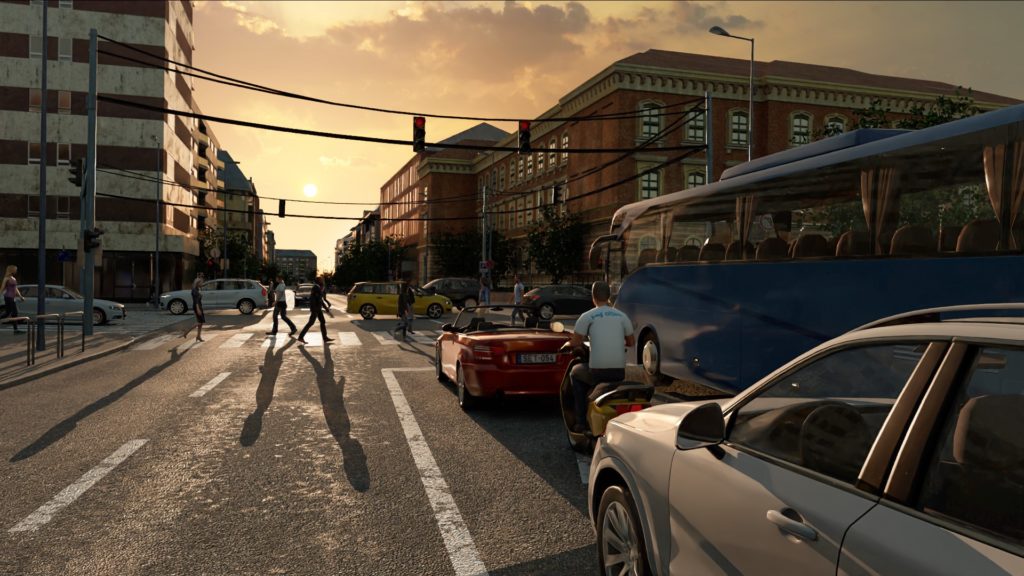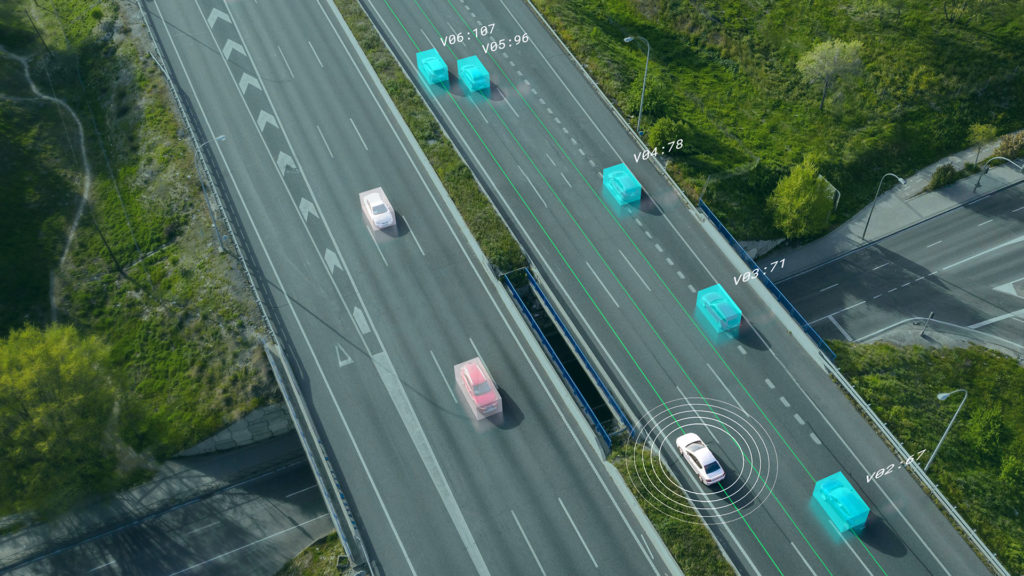The importance of Automated Driving Expertise
aiMotive as an example of a very succesful start-up
by Dr Susanne Roeder, DSC Media Correspondant, © DSA
aiMotive was founded in 2015. aiData and aiDrive develop under the same roof. aiData and aiSim also work very closely together. From the beginning, the investors that founded the start-up have been looking for opportunities to work together with OEMs and suppliers. These included Volvo, SAIC and PSA. There were three projects with PSA alone. After that, there was a pause in the collaboration with the French, but they then came back to aiMotive as Stellantis, which eventually resulted in Stellantis acquiring the start-up at the end of last year. Stellantis CEO Carlos Tavares: “We expect acceleration and more competition and later affordability.”
“3D data is all around us”, said Péter Tamàs Kovács at DSC 2023. Kovács holds a leading position at aiMotive, which like ADAS / ADS (Advanced Driver Assistance Systems / Automated Driving Systems) is one of the largest independent automated driving technology providers.
With his pointed statement the Hungarian scientist aimed at emphasising the parallels between 3 D visualisation and display and the techniques and technologies deployed for the development of autonomous vehicles.
“In both areas, we are capturing the 3 D world around the people and around automated vehicles with different sensors such as cameras, ultrasonics, lidar, radars.” As is common knowledge among the DSC attendants, the sensor data is used to “reconstruct the 3 D world around us. At least those parts that are interesting for the application.” For doing so, it is mandatory to have a multi-sensor system.

In a nutshell, the people at aiMotive provide tools for others to process their ideas. “We can provide tools, or we can even provide software as a service to process data which was captured by someone else and provide the results to them,” Kovács specified. “Added to which we can support data sharing by opening up data formats we are using, so that they can be interchanged. We can in fact convert data coming from other sources to the format that we can process.”
However, aiMotive is not in a position to exchange data between third parties. They have to decide for themselves what they are willing to share. And this is exactly what impedes faster progress.
Appearance versus accuracy
The difference between 3D displays and data for automotive driving being that for the displays the focus is more on the appearance of the reconstructed scene, whereas for automated driving the focus has to be on the accuracy of the estimations of collisions and velocities of the other actors – people, cyclists, vehicles surrounding the specific automated vehicle. “For automated driving, we are interested in extracting the information needed in order to make decisions.”
We asked Kovács so elucidate what he calls “Learned trajectories”, and what he meant by saying he could fill in “little gaps”. By now the automated vehicles can sense lane markings and where lanes are in 99.x percent of times. But there are these short time intervals where the lane markings are not visible at all, for example in the case of an intersection of 20 to 30 metres which one passes within half a second. In such cases where there is no lane markings, but one does not want the automated vehicle to start bleeping asking the driver to take over or to stop, but to continue driving, this short period of time needs to be bridged.
“You want the car to drive in the right direction, for example by following the vehicle in front of you. If there is no vehicle in front, there is still a trajectory which can help following the machine learning (ML) algorithms,” Kovács explained. But how can one train the machine to know what seems to be a good way forward, if it is unknown where the lane is? In this case, it takes umpteen hours of manual, i.e. real driving during which data is collected. It is about neural network training leading to large amounts of synchronised, calibrated multisensory data.
Making the driver increasingly redundant
Kovács: “On the other hand, if the ML algorithm is not confident enough about its output, there is still the option to signal to the driver that he has to take over.” The point being to make the driver take over less and less often. Another important aspect is that the learned trajectory can also be cross-checked against safety criteria.
“With aiSim we can put ADAS software around the metric driving software and connect the simlulated sensor algorithms of aiSim to the inputs, as if driving on a real road,” said Kovács to explain how the various players on the market cooperate. In fact, as could repeatedly be heard during the conference they will increasingly have to do so, if fast progress is to be made in the field of safe automated driving.
As the Hungarian AI expert explained further: “So when aiDrive is driving within aiSim, it does not know it is not driving in a real world. It can see that there are images coming in and it can see that the wheels are turning and it can see the GPS position is being updated as it drives. So basically, based on the virtual environment we can regenerate the sensor signals as they come into these algorithms.”
Chinese Walls within the company
Although aiMotive is now owned by Stellantis, the company is allowed to remain independent. In other words, it can pursue further developments that may not presently be part of the Stellantis portfolio.
“All our product lines have a road map, and this road map is essentially based on the requests either coming from Stellantis or coming from our internal needs as a company.” However, the external customers also have a say and can influence the road maps. As a result, the road map is assembled based on a combination of the urgency and the priority of these requests.
However, in the case of the aiData pipeline aiMotive is not allowed forward data which was provided by one customer to another customer. “If we ourselves develop a new feature that, of course, is available for everyone.” In other words, if there is an exclusive feature developed on the request of one customer, this feature is owned by the customer for a certain period of time. After that such features become available for everyone.

